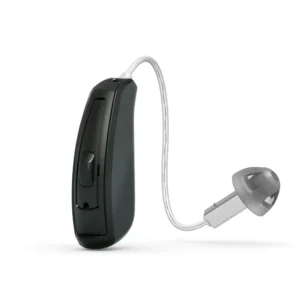
While you are looking for rca hearing aids, I must tell you that there is absolutely no rac hearing aid at least for now.
RCA (Radio Corporation of America) does not produce hearing aids. RCA is historically known for its contributions to consumer electronics such as televisions, radios, and audio equipment. However, hearing aids are specialized medical devices typically produced by companies focused specifically on healthcare technology or hearing solutions. These companies invest heavily in research, development, and technology specifically tailored to address hearing loss and improve auditory experiences for individuals. Therefore, if you are looking for hearing aids, you would typically seek out specialized manufacturers in the healthcare or medical device sectors.

RCA is known for a range of consumer electronics, but they are not typically associated with hearing aids. Hearing aids are usually produced by specialized companies (listed below) that focus on healthcare technology or specifically on hearing solutions. If you’re looking for information on hearing aids, check out Tinnitus Treatment Remedy
RCA (Radio Corporation of America) is a well-known American electronics company that has a rich history in the development of various consumer electronics. It was a major player in the early 20th century and was involved in the development of radio broadcasting, television, and other technologies.
While RCA may not be as dominant in consumer electronics today as it once was, its brand is still recognized and its historical contributions to electronics technology are significant.
They are not known to produce hearing aids neither do they produce rca hearing aids.
There are several specialized manufacturers known for producing high-quality hearing aids. Some of the prominent names in the industry include:
These companies invest heavily in research and development to create hearing aids that cater to different types of hearing loss, preferences for design and functionality, and integration with modern technology like Bluetooth connectivity and smartphone apps.
Treatment for tinnitus, which is the perception of sound in the ears or head without an external source, depends on the underlying cause and severity of symptoms. While there is no single cure for tinnitus that works universally for everyone, there are several approaches that can help manage and alleviate its effects. Here are some common treatments and strategies:
It’s important for individuals experiencing tinnitus to work closely with healthcare professionals, such as an audiologist or an otolaryngologist (ENT doctor), to develop a personalized treatment plan. This plan may involve a combination of approaches tailored to the individual’s specific symptoms and needs

there are several potential causes and conditions that could be involved:
If you or someone you know is experiencing hearing loss in one ear or any related symptoms, it’s important to consult with a healthcare professional
The Human Ear:
The human ear is a complex organ responsible for detecting sound waves and transmitting them to the brain for interpretation. It consists of three main parts: the outer ear, middle ear, and inner ear. Here’s a brief overview of each part and its function:
1. **Outer Ear**:
– **Pinna (Auricle)**: The visible part of the ear that helps collect sound waves and directs them into the ear canal.
– **Ear Canal (Auditory Canal)**: A tube-like structure that leads from the outer ear to the eardrum. It amplifies and directs sound waves to the eardrum.
2. **Middle Ear**:
– **Eardrum (Tympanic Membrane)**: A thin membrane that vibrates in response to sound waves hitting it.
– **Ossicles**: Three tiny bones (malleus, incus, and stapes) located in the middle ear. They transmit and amplify vibrations from the eardrum to the inner ear.
– **Eustachian Tube**: A tube that connects the middle ear to the back of the throat. It helps equalize pressure between the middle ear and the outside environment.
3. **Inner Ear**:
– **Cochlea**: A spiral-shaped, fluid-filled structure responsible for converting sound vibrations into electrical signals that can be interpreted by the brain. It contains thousands of hair cells that detect different frequencies of sound.
– **Vestibular System**: Part of the inner ear that helps maintain balance and spatial orientation. It includes the semicircular canals and otolithic organs.
4. **Auditory Nerve**:
– **Auditory Nerve (Cranial Nerve VIII)**: Carries electrical signals from the cochlea to the brain, where sound is processed and interpreted.
The process of hearing begins when sound waves enter the outer ear and travel down the ear canal, causing the eardrum to vibrate. These vibrations are transmitted through the ossicles in the middle ear and into the cochlea of the inner ear. Hair cells in the cochlea convert the vibrations into electrical signals, which are then transmitted via the auditory nerve to the brain’s auditory cortex for interpretation as sound.
The human ear is not only essential for hearing but also plays a crucial role in maintaining balance and spatial orientation through its vestibular system. Understanding the structure and function of the ear helps in appreciating its complexity and the mechanisms involved in auditory perception.
The Auditory Cortex:
The auditory cortex is a region of the brain located in the temporal lobe, which is responsible for processing auditory information. It plays a crucial role in interpreting sound signals received from the cochlea via the auditory nerve. Here are some key aspects of the auditory cortex:

The Brain’s Connectivity to the Ear:
The brain’s connectivity to the ear involves a complex network of structures and pathways that work together to process auditory information. Here’s an overview of how the brain is connected to the ear and how auditory signals are transmitted and interpreted:
1. **Transmission of Sound Signals**:
– Sound waves are collected by the outer ear (pinna) and travel through the ear canal to the eardrum (tympanic membrane).
– The eardrum vibrates in response to sound waves, transmitting these vibrations to the middle ear.
– In the middle ear, the ossicles (three small bones: malleus, incus, and stapes) amplify and transmit the vibrations to the inner ear.
2. **Inner Ear and Cochlear Processing**:
– The inner ear includes the cochlea, a spiral-shaped structure filled with fluid and lined with hair cells.
– Sound vibrations cause the fluid inside the cochlea to move, stimulating the hair cells.
– Hair cells convert mechanical vibrations into electrical signals (action potentials).
3. **Auditory Nerve**:
– Electrical signals from the hair cells are transmitted via the auditory nerve (cranial nerve VIII) to the brainstem.
4. **Brainstem Processing**:
– In the brainstem, auditory signals are first processed and integrated. This region helps in basic sound localization and intensity discrimination.
5. **Pathway to the Auditory Cortex**:
– From the brainstem, auditory information travels to the thalamus, which acts as a relay station.
– The thalamus then sends auditory signals to the primary auditory cortex (A1), located in the temporal lobes of the brain.
6. **Auditory Cortex**:
– The auditory cortex is responsible for higher-level processing of auditory information, including analyzing pitch, timbre, and location of sound sources.
– It plays a crucial role in recognizing and understanding speech, music, and other auditory stimuli.
7. **Feedback and Integration**:
– Auditory processing is not just a linear pathway; it involves feedback loops and connections with other brain regions involved in memory, emotion, and language processing.
– For example, connections with areas like the frontal lobe (involved in language) and limbic system (involved in emotion) influence how we interpret and respond to auditory information.
In summary, the brain’s connectivity to the ear involves a series of specialized structures and pathways that work together to process auditory stimuli from the external environment. This complex system allows us to perceive and interpret sound, facilitating communication, spatial awareness, and overall interaction with our surroundings.
How to Manage Tinnitus at Home: If tinnitus is mostly noticed in quiet situations, first you should try using a white noise machine to mask the noise. If you don’t have a white noise machine, a fan, soft music or low-volumed static radio will help.




How do you deal with tinnitus? If tinnitus is mostly noticeable in quiet situations, try using a white noise machine to mask the noise from tinnitus. If you don’t have a white noise machine, a fan, soft music or low-volume radio static also may help.